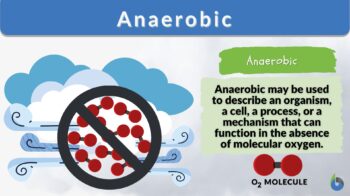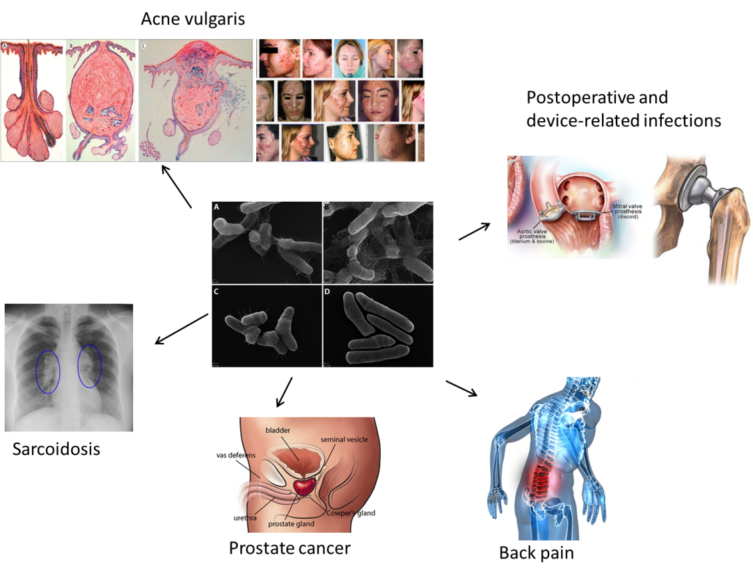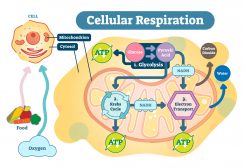
Anaerobic
adj.,[ˌænəˈɹoʊbik]
Definition: without oxygen; of or relating to an anaerobe
Table of Contents
As largely known are the subset of biological processes that are directly correlated to the ‘usage of molecular oxygen’, the other subset remains lesser-known. We scientifically term the former processes as “aerobic” in nature. Lesser known are the processes that manage or let’s say optimally occur only in conditions where ‘no molecular oxygen is present’.
This unavailability of oxygen is called the “anaerobic condition”. A very important term in biological science that will be explored here is anaerobic. It’s not limited to just anaerobic conditions. Rather, it will be a wide scope, encompassing a multitude of varied entities — an organism, cell, mechanism, form of exercise, and whatnot that categorically do not involve oxygen can be anaerobic.
Hence, gathering a good span of knowledge about what anaerobic means becomes vital for a student of biological science. Read on the article to get a crisp summary of the anaerobic term and its versatile usages. By the end of this piece, you would be able to not just define anaerobic but know what its importance is in the massive biological world.
Anaerobic Definition
In science, the definition of anaerobic is as follows:
- Not requiring, or capable of occurring, in the absence of air or free molecular oxygen
- Caused by, or relating to, the lack of molecular oxygen
The definition of anaerobic in biology remains the same:
Anaerobic Etymology
- The anaerobic term finds its root in 3 Greek terms namely,
- “ἀν” which is translated to the Latin word “an” meaning ‘not’ in English.
- “ἀήρ” which is translated to a Latin word “aḗr” meaning ‘air’ in English.
- “βίος” which is translated to a Latin word “bios” meaning ‘life’ in English.
- And a ‘-ic’ suffix.
- This literally stands for ‘life without oxygen’.
- It was in the year 1863 that the now well-renowned French bacteriologist Louis Pasteur coined the term “anaérobie” to define anaerobic as “the unique capability of organisms, cells, processes, and life to continue even in the absence of molecular oxygen”.
- Now that we know what is anaerobic, let’s move ahead and learn about the varied usages of this term in Science.
Biology Definition:
The word “anaerobic” is defined as “not requiring oxygen” or describing something lacking in molecular oxygen. It may also relate to an anaerobe that is capable of occurring or thriving in the absence of air or free oxygen. This is in contrast to the term aerobic, which means requiring air or free oxygen.
Etymology: from French anaérobie, coined in 1863 by Louis Pasteur, from Greek an- (“without”) + aer (“air”) + bios (“life”)
Related forms: anaerobe (noun), anaerobically (adverb)
Related terms: anaerobic bacteria, anaerobic process, anaerobic exercise, anaerobic respiration
Compare: aerobic
Versatile Usages of the term “Anaerobic”
Anaerobic respiration
When we talk about the utilization of oxygen, respiration is the first biological process that strikes our minds. This is because we have always been taught that the inhalation process (breathing in the air) is vital for channeling atmospheric oxygen to our lungs. Lungs are the organs of our body that carry out the main process of respiration. Now imagining respiration without oxygen might sound like a new concept to you for a second. But many living organisms carry out anaerobic respiration, which is a respiration process in the absence of oxygen.
Rather than using molecular oxygen (O2) as the “final electron acceptor molecule” in the respiratory metabolism chain (electron transport chain), these organisms tend to depend on other alternative molecules as their final electron acceptor. Some examples of these alternative final electron acceptors in anaerobic living organisms are:
- Nitrate (NO3–)
- Fumarate (C4H2O42-)
- Sulfate (SO42-)
- Elemental sulfur (S)
When we compare aerobic and anaerobic respiration, the efficiency of anaerobic respiration is lesser. Reason: All these alternative final electron acceptors possess lesser oxidizing capabilities, i.e. smaller reduction potentials in comparison to molecular oxygen (O2). Upon respiration via anaerobic means, lesser energy is released per every oxidized molecule. This is the reason for the decreased efficiency of anaerobic respiration.
Some examples of organisms that carry out anaerobic respiration are: Finegoldia magna, Methanobrevibacter smithii, Clostridium botulinum, Loricifera, Henneguya zschokkei, Chytridiomycota

Figure 1: Finegoldia magna is an anaerobic bacterial species that causes a range of problems in human beings. Although it’s a common inhabitant of human gut flora, it has been noticed to cause some diseases too. In 2012, a report surfaced from India where ‘NECROTIZING FASCIITIS’ was observed in a patient with the presence of only this bacteria species. Image Credit: Misra, R.N., 2012. 
Figure 2: Chytridiomycota is an example of fungi that performs anaerobic respiration for its metabolic needs. Some representatives of this fungal group have been studied to inhabit the rumen of herbivores. These fungi help the herbivores in the efficient digestion of cellulose-rich plant-based diets.
A – shows a diagrammatic view of the fungal species.
B – Neocallimastix sp. Thallus.
C- DAPI-stained Neocallimastix sp. Thallus (DAPI is a fluorescent stain that binds with the nucleus).
Image Credit: Trinci et al. 1994.Anaerobic metabolism
Anaerobic metabolism is a type of biological metabolism process where ATP production happens without oxygen consumption, i.e., in the absence of oxygen.
In this type of metabolic process, the phosphate is transferred directly from a phosphorylated intermediate to ADP. This leads to ATP formation.
In humans, anaerobic metabolism is carried out by the muscles while doing strenuous exercises. With the lack of oxygen availability, muscles switch to anaerobic respiration. This leads to the accumulation of lactic acid in muscles which is a by-product of anaerobic metabolism.
We must note additionally that when an athlete undergoes anaerobic metabolism, he/she/they get less energy as compared to aerobic metabolism. The main reason for this lesser energy is the partial/incomplete breakdown of glucose molecules via an anaerobic type of metabolism.
Another important point to note: Since anaerobic metabolism produces merely 2 ATPs per glucose molecule in contrast to 36 ATPs per glucose molecule via aerobic metabolism, it can’t continuously meet the energy needs for normal cerebral function.
So, anaerobic metabolism during exercise in human muscles for a short period of time is fine but it can never outcompete/beat the aerobic metabolism that sustains human life.

Figure 3: Anaerobic metabolism leaves lactic acid in the muscles of athletes. Image Credit: Science Department, Deerfield High School. Anaerobic organisms
Anaerobic organisms are those that don’t depend upon the presence of oxygen for their metabolic reactions. They are simply called “ANAEROBES”. There are three different types of anaerobic organisms namely;
- Obligate anaerobes: These organisms need the strict absence of oxygen, i.e. they can’t tolerate the presence of molecular oxygen around them. In the slightest exposure incidents with oxygen, these organisms tend to get harmed. Some examples of anaerobic bacteria are Bacteroides thetaiotaomicron, Peptostreptococcus, Prevotella
- Facultative anaerobes: These organisms are usually noticed to survive fine in absence of oxygen but switch to aerobic respiration as soon as molecular oxygen becomes available to them. Some examples are: Staphylococcus spp., Salmonella, Shewanella oneidensis
- Aerotolerant organisms: These organisms are like obligate anaerobes in their capability to always rely on the anaerobic metabolism process but additionally they are “tolerant” to the presence of oxygen. On exposure to molecular oxygen, they aren’t harmed but it comes at the trade-off of the ability to switch to aerobic means. (That means even in the presence of oxygen, they can’t utilize it because they don’t have the ability to switch from anaerobic to aerobic metabolism like facultative anaerobes). Some examples are Cutibacterium acnes, Lactobacillus rhamnosus, Streptococcus pyogenes.

Figure 4: Photomicrograph of Bacteroides thetaiotaomicron, an obligate anaerobe. Image Credit: CDC/ Dr. V. R. Dowell, Jr. 
Figure 5: Shewanella oneidensis is a facultative anaerobe that is commonly found in soil. Image Credit: Ella Marushchenko/University of Minnesota. 
Figure 6: Cutibacterium acnes is an aerotolerant anaerobe that is involved in acne conditions in human beings. Image Credit: Diane M. Thiboutot, Amanda M. Nelson (Ref.5).
Anaerobic activity
Anaerobic activity is the capability of an organism to carry out anaerobic respiration.
Anaerobic infection
Anaerobic infections are caused by anaerobic organisms. Some examples are necrotizing infections of soft tissue, brain abscesses, aspiration pneumonia, and abdominal abscesses.

Figure 7: These are some of the sites of the body that have been closely associated with slow-growing anaerobes. This leads to anaerobic infection development. Image Credit: Medical Bacteriology – Aarhus University. Anaerobic environment
An anaerobic environment is one that is devoid of molecular oxygen.
Anaerobic system
An anaerobic system refers to nothing else but an anaerobic metabolic system.
Anaerobic threshold
This term is used in reference to exercise and fitness. It stands for the “threshold oxygen consumption value” above which aerobic metabolism falls short and can’t fulfill the body’s energy requirements. In such a case, anaerobic metabolism supplementation comes to aid.
Anaerobic fitness, anaerobic exercise, and anaerobic workouts
All of these are interconnected terminologies. Both aerobic exercises and anaerobic exercises are important for our overall fitness. Aerobic exercise is the one that happens at the expense of oxygen in the human body. Anaerobic training comprises exercises that happen without the utilization of oxygen in the body. As aerobic and anaerobic exercises target and portray different types of challenges to our body, both are vital for a good health outcome.
Aerobic and anaerobic exercise varies from each other in the way that you perform it and in the sense of final fitness goals.
An aerobic workout is done targeting a healthy cardiovascular system. Aerobic workouts/exercise routine is intentionally planned by fitness trainers for the clients to lose weight. A variety of aerobic workouts like running, swimming, skipping rope, climbing stairs, cycling, etc. involve vigorous aerobic activity. This is sometimes also called “cardio” as this form of intense exercise increases your overall cardiovascular endurance and improves physical fitness. Both breathing rate and heart rate are amped up during aerobic activities because of the intense physical activity involved.
Anaerobic exercises are different from aerobic exercises in the sense that they are targeted to challenge the maximum strength of the body for the ‘short spurts’ of a time period. Adding anaerobic exercise to your routine can be a good choice when you are planning to build muscle mass and lose the extra fat from your body.
Unlike aerobic exercise, the benefits of anaerobic exercise are admired more by those who are targeting a good muscular physique. Some examples of anaerobic exercise are weightlifting, sprinting, high-intensity interval training (HIIT), high-intensity intermittent exercise, high-intensity intermittent exercise, etc.
As the body behaves differently while performing an anaerobic exercise, the derivation of energy is not via normal aerobic respiration. The energy needs are met by breaking down body muscles. Hence, rest after anaerobic exercise is equally important as the exercise itself. The anaerobic exercise training effects are felt after dedicated months of practice.

Figure 8: Pamphlet showing how aerobic exercise and its related goals differ from anaerobic exercise and its goals. Image Credit: ISSA.
Anaerobic Examples
- Anaerobic respiration examples: dissimilatory denitrification, methanogenesis
- Anaerobic bacteria examples: Cutibacterium acnes, Bacteroides thetaiotaomicron, Peptostreptococcus, Prevotella, Staphylococcus spp., Salmonella, Shewanella oneidensis
- Many more examples have been discussed in various sections above

Watch this vid – aerobic exercise vs anaerobic exercise:
Get to Know Loricifera!

Usually and mostly anaerobic organisms are unicellular in nature as anaerobic respiration’s efficiency is lesser as compared to aerobic respiration. With lesser efficiency, it’s difficult to sustain the complex metabolic needs of multicellular organisms. Even then there are some organisms that beat the odds and have both multicellularity and anaerobic capability.
Such an exceptional example is the Loricifera. Anaerobic respiration sustains the multicellular bodies of the members of Loricifera.
Loricifera is a phylum that belongs to the superphylum Ecdysozoa (of subkingdom Eumetazoa, Kingdom Animalia). These organisms spend almost all of their life at the base of the Mediterranean Sea. Such conditions are devoid of any molecular oxygen due to the lack of aeration in water at such depth, therefore nature has endowed them with the unique capability of carrying out anaerobic respiration for sustenance. (Ref-1)
Answer the quiz below to check what you have learned so far about anaerobic.
Reference
- Fang, J. Animals thrive without oxygen at sea bottom. Nature 464, 825 (2010). https://doi.org/10.1038/464825b
- Hodrova B, Kopecny J, Kas J. “Cellulolytic enzymes of rumen anaerobic fungi Orpinomyces joyonii and Caecomyces communis.” Research in microbiology. 1998 Jun;149(6):417-27.
- Misra, R.N., Dubhashi, S.P., Paul, R., Suleman, A., Nr, G., & Jadhav, S.V. (2012). NECROTIZING FASCIITIS DUE TO Finegoldia magna (Peptostreptococcus magnus) AS THE SOLE ISOLATE- RARE REPORT FROM INDIA.
- Prescott LM, Harley JP, Klein DA (1996). Microbiology (3rd ed.). Wm. C. Brown Publishers. pp. 130–131. ISBN 978-0-697-29390-9.
- Diane M. Thiboutot, Amanda M. Nelson (2021). Keeping the peace: commensal Cutibacterium acnes trains CD4+ TH17 cells to trap and kill. J Clin Invest.;131(2):e145379. https://doi.org/10.1172/JCI145379.
©BiologyOnline.com. Content provided and moderated by Biology Online Editors.
















